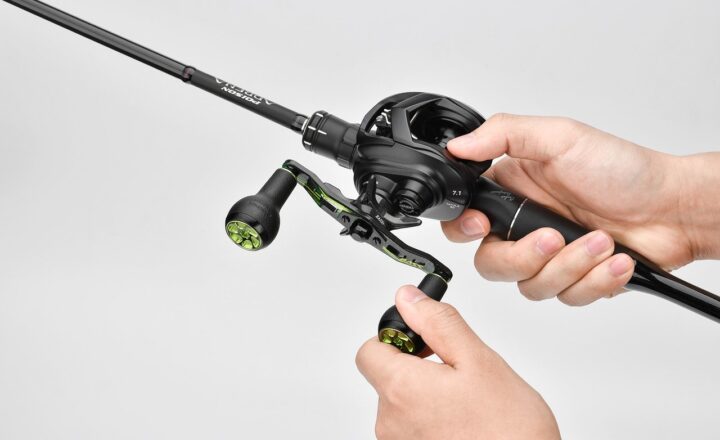How to Catch Monster Fish: Techniques Used by Expert Fishermen
November 11, 2024

Fishing is more than just a leisurely pastime; it’s a skill, an art, and a science. For those who crave the thrill of reeling in a monster fish, understanding the techniques utilized by expert fishermen can transform your average fishing trip into an adventure of a lifetime. In this detailed guide, we will explore various methods, strategies, and tips that will help you catch larger fish and enhance your fishing experience.
1. Understanding Your Target: The Monster Fish
Before you can start catching monster fish, it’s crucial to understand what constitutes a monster fish in your area. Different species can grow to impressive sizes:
- Bass: Largemouth bass can reach weights of over 10 pounds, while smallmouth bass can also be hefty contributors to your fishing tale.
- Catfish: Various species, particularly blue catfish, can grow beyond 100 pounds, offering exhilarating battles.
- Pike and Musky: Northern pike and muskellunge are known for their size and ferocity, with muskies often exceeding 50 inches.
- Saltwater Giants: In saltwater, consider tarpon, marlin, and shark; they provide some of the most thrilling catches on the planet.
Understanding your target is half the battle, so take time to research the species you’re after, including their behavior, feeding patterns, and preferred habitats.
2. Choosing the Right Gear
Having the right tools is essential for serious fishing. Here are some gear recommendations:
- Rod and Reel: Heavy-duty rods and reels are necessary for large fish. Opt for a strong, durable rod with a fast action to help you maintain control during fights.
- Line: Use a braided line for its strength and sensitivity. A line test rating of at least 30-100 pounds is recommended for monster fish.
- Hooks: Larger hooks (size 3/0 to 8/0) are often needed to accommodate larger bait and stronger fish.
- Bait: Use live bait like shad or minnows when targeting largemouth bass, while catfish respond well to stink baits, chicken livers, and cut bait.
Invest in high-quality gear that can withstand the strain of monster fish fights. Remember, cheaper equipment may let you down when it matters most.
3. Timing and Location: Find the Sweet Spot
Knowing the best fishing spots and the times to fish is crucial for success:
- Seasons: Many fish spawn in spring, making this an excellent time to target larger specimens as they prepare to breed.
- Time of Day: Early morning and late evening are often the most productive times, as fish are more active in cooler temperatures.
- Weather Conditions: Overcast days can increase catch rates since fish tend to stay closer to the surface. Additionally, barometric pressure changes can affect feeding patterns.
- Top Locations: Lakes, rivers, and coastal areas rich in structure (like submerged rocks, weed beds, and drop-offs) are prime locations for finding monster fish.
Plan your fishing trips accordingly by researching local reports, checking weather forecasts, and understanding how conditions affect your target species.
4. Techniques for Catching Monster Fish
There are several methods expert fishermen use to hook monster fish:
- Bottom Fishing: Suitable for catfish and other bottom feeders. Use heavy sinkers to keep your bait on the bottom where these fish tend to lurk.
- Trolling: Effective for targeting larger fish over vast areas (particularly in saltwater fishing). This involves dragging baited lines behind a boating vessel, luring fish from a distance.
- Casting and Retrieving: For species like bass, casting lures into cover (like lily pads or submerged structures) and retrieving them can entice bigger fish.
- Fly Fishing: A specialized technique particularly effective for species like trout and salmon. Use weighted flies to mimic the natural food source of your target fish.
Experiment with different techniques, as conditions (such as time of year, location, and weather) may dictate which method is more effective.
5. Patience and Persistence: Keys to Success
When it comes to fishing, the old adage rings true: patience is a virtue. Remember these key points:
- Stay Focused: It may take hours—or even days—to land a monster fish. Stay alert, and maintain focus during your wait.
- Keep Trying: If you’re not having luck with one technique, don’t hesitate to switch gears or change locations. Experimentation can lead to success.
- Learn from Others: Don’t hesitate to seek advice from more experienced fishermen. Join online forums or local fishing clubs for tips and shared experiences.
Fishing for monster fish requires time and dedication. Remember that each trip is a learning experience, even if you don’t land the big one right away!
Conclusion
Catching monster fish is not only about luck, but also about using the right knowledge, gear, and techniques. By understanding your target species, selecting your gear wisely, and adapting your strategies based on conditions and observations, you can increase your chances of landing that prized catch.
Plan your trips well, practice patience and persistence, and soon you’ll be telling tales about your monstrous catches. So grab your rod, head to the water, and may the fish be always in your favor!








